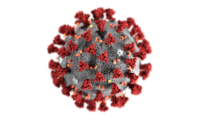There are a number of best practices that an employer should follow when faced with any OSHA inspection. Like most best practices, they start with advanced planning so that everyone is prepared when the inspector shows up. Employers should consider identifying and training representatives to manage the inspection from start to finish. These representatives should be among the first on the scene—to greet the inspector, determine the reason for the inspection, get a copy of the complaint, accompany the inspector on the visit, document the inspector’s findings, provide requested documents in a timely fashion, and be prepared for follow-up.
Over the past year, COVID-19 has brought significant changes both to our workplaces and to OSHA’s inspection and enforcement focus. The inspection process was and continues to be changed by COVID-19. It has added another layer of health and safety considerations for employers in general, and these considerations carry over to the inspection process.
As OSHA makes clear in its COVID-related Updated Interim Enforcement Response Plan and National Emphasis Program (NEP), it continues to conduct in-person investigations during the pandemic. Many of these inspections (though not all) will be focused on COVID-19 related concerns. Some inspection procedures may be modified, with certain interviews and requests for documents taking place remotely or electronically, but employers should be prepared for in-person inspections related to COVID-19. The recently issued NEP indicates that OSHA will continue to prioritize inspections of workplaces that have experienced COVID-19 related fatalities or hospitalizations. But OSHA also develops priorities for programmatic inspections related to COVID-19. OSHA’s primary enforcement target continues to be the health care industry, but there are several manufacturing industries included on the target lists for programmatic inspections, including chemical, paper, plastics, and rubber product manufacturing; industrial machinery manufacturing; food and beverage manufacturing; and certain transportation sectors.
Given this focus, it is important for all employers to understand OSHA’s guidance related to COVID-19. As of the writing of this article, OSHA has not yet adopted an emergency temporary standard with regard to COVID-19. However, OSHA has made it clear that it will use standards in the existing statute and regulations to support the issuance of citations for COVID-19 workplace deficiencies (and it has done so).
OSHA has issued a series of COVID-19 related guidance memos since the start of the pandemic. The guidance has shifted as the progression and impact of COVID-19 has evolved. Along with general guidance applicable to all employers, OSHA has issued industry-specific guidance to elaborate on particular risks and protections. It has also issued COVID-19 related guidance specific to certain industries to supplement the general guidance.
Since the pandemic began, OSHA has consistently recommended that employers develop and implement a COVID-19 prevention program to mitigate the spread of COVID-19 in the workplace. This prevention program should include certain elements:
- Performance of a hazard assessment (something that, in many workplaces, will need to be reviewed and periodically updated);
- Identifying and implementing measures to limit the spread of COVID-19 in the workplace;
- Adopting measures to ensure that infected/potentially infected workers are separated and sent home; and
- Implementing protections from retaliation for workers that raise COVID-19 related concerns.
As indicated above, the first step in this process is hazard assessment. Employers should evaluate COVID-19 exposure hazards for all workers and tasks, including the risk of exposure and the measures needed to reduce that risk. These measures may be different for different workers and tasks. For example, job functions that are outdoor, in areas where workers are able to remain at least 6 feet apart, and with little or no contact with the public or other visitors may be classified as low risk. On the contrary, tasks that involve entering an indoor work space, especially where workers are not able to maintain appropriate distance, may be higher risk. In this instance, it might be appropriate for the employer to use physical barriers to separate workers or improve ventilation. To minimize any potential spread, employers may also consider screening employees in advance of any higher hazard work for symptoms of COVID-19.
It is this potential for spread that further expands an employer’s health and safety responsibilities with respect to COVID-19. Given the risk of transmission, is important for employers not only to consider protections for its own employees, but also for visitors to the workplace. Exposure to visitors presents a potential risk to workers, so employers should consider these visitors when developing a COVID-19 prevention program. Customer and visitor exposure should be a component of an employer’s hazard assessment. Employers may consider screening visitors to the workplace in advance of arrival for signs and symptoms of COVID-19. And if an employer’s COVID-19 prevention program requires the use of face coverings, physical distancing, or other protective measures, visitors should be required to follow the same rules.
It is important to remember that the OSHA inspector is among the facility’s visitors. As made clear by the COVID-19 NEP, many in-person OSHA inspections in the coming months may be COVID-related. Whether they are or not, it will be important for employers to demonstrate that they are aware of and taking seriously OSHA’s expectations for protecting workers from COVID-19 risks. Employers should be prepared to demonstrate the actions they have taken to meet those expectations during any inspection, and they should follow all COVID-19 procedures during any on-site inspection. Employers should also be prepared to be flexible with regard to remote follow-up.
Lastly, employers should continue to be mindful of OSHA’s whistleblower protections, in general and specifically regarding COVID-19 complaints. Over the past year, whistleblower complaints have increased overall by nearly 30 percent -- almost 40 percent of those complaints were COVID-19 specific. In addition, complaints of retaliation are on the rise. Both the COVID-19 NEP and OSHA’s Interim Enforcement Response Plan specifically reference whistleblower protections, and inspectors will be on the lookout for employers who take action against an employee that raises concerns about COVID-19 risks and exposures.









